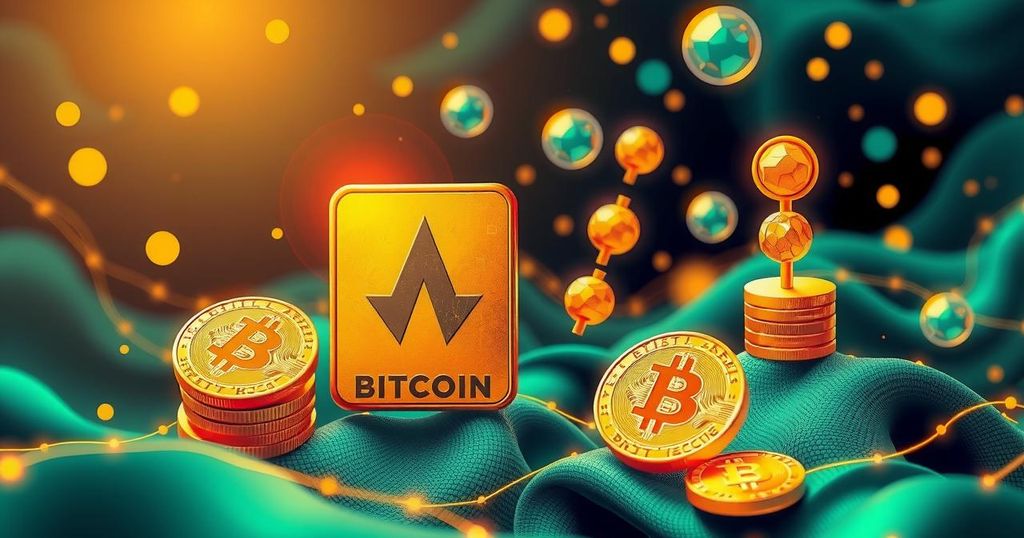Adam Back Discusses Bitcoin, ETFs, and the Satoshi Identity Debate
In a recent conversation, Blockstream CEO Adam Back shared thoughts on Bitcoin’s ETF accessibility and ongoing speculation regarding his potential identity as Satoshi Nakamoto. He emphasised the importance of retaining Bitcoin’s decentralised nature while acknowledging the impact of ETFs on mainstream adoption. Back reflected on his foundational work in Bitcoin’s development and expressed optimism about future price increases, citing past cycles and potential investments arising from the FTX resolution.
In an intriguing discussion, Blockstream CEO Adam Back addressed various aspects surrounding Bitcoin, including the controversial topic of ETFs and the ongoing speculation regarding his possible connection to Bitcoin’s mysterious creator, Satoshi Nakamoto. Back, who is often speculated to be Satoshi due to his deep roots in the cryptocurrency world, displayed surprising patience towards newcomers trying to navigate the complexities of buying Bitcoin. “You have to have some empathy for the people who want to buy Bitcoin, but don’t know how to do it,” he said, acknowledging that it can be confusing for newcomers. However, he expressed concern about too much Bitcoin being absorbed into ETFs, cautioning against having “90% of it” in such products.
Back is not just any enthusiast; he’s one of Bitcoin’s original contributors, directly referenced by Satoshi in the 2008 white paper. His early work on Hashcash laid the groundwork for Bitcoin’s mining framework. He earned a PhD from the University of Exeter in distributed systems and founded Blockstream in 2014, which has concentrated on Bitcoin development initiatives. Over the years, Blockstream has made significant advancements, such as using satellites to transmit the Bitcoin blockchain globally and launching the Liquid Network, Bitcoin’s first sidechain that provides faster transactions.
Interestingly, despite the scepticism often directed at ETFs by Bitcoin purists, Back believes they actually enhance Bitcoin’s accessibility, especially for older investors. “It’s just accessibility now; now it’s become reachable, they can invest in it,” he explained. He added that ETF investors tend to be more resilient, often holding onto their investments for several years and steering clear of the panic selling seen on exchanges.
This sentiment seems to align with a trend in which even some hardcore Bitcoin enthusiasts have shifted larger portions of their assets into ETFs primarily for security and ease of management, as highlighted by the prominent Bitcoiner PlanB. He noted, “Not having to hassle with keys gives me peace of mind,” signifying a shift in attitudes towards traditional Bitcoin holdings.
Back’s commentary on government-held Bitcoin is also noteworthy. He chuckled about past sales of seized Bitcoin, suggesting that countries have regretted offloading assets when cryptocurrency values skyrocketed. He acknowledges that governments currently hold a significant portion of Bitcoin but remarked on their apparent shift from actively selling it.
On the perennial question of whether he is Satoshi Nakomoto, Back shrugged it off with humour, saying, “You get used to it.” He recognises that the speculation is not entirely unfounded given the close-knit group of developers engaged in early digital currency discussions. Yet he maintains that he entered the Bitcoin conversation in 2013, well after Satoshi had disappeared from the spotlight.
Reflecting on the ongoing challenges within the cryptocurrency space, Back pointed to Ethereum co-founder Vitalik Buterin’s situation regarding leadership and control. He remarked that a decentralised currency shouldn’t have an overriding authority, referencing the Ethereum Foundation’s recent leadership struggles and underlining Bitcoin’s very distinctive approach of remaining leaderless.
Throughout his discussions, Back remained steadfast in his commitment to Bitcoin’s decentralised nature. He warned against diluting these principles for the sake of development, saying, “We need to hold on to the decentralized nature of Bitcoin and its permissionless properties.”
Looking ahead, Back expressed optimism about Bitcoin’s future, predicting that the price could reach hundreds of thousands of pounds by 2025 as Bitcoin’s market dynamics evolve. He attributed a potential uptick in investment to the resolution of the FTX bankruptcy and the consequent payout to investors, suggesting that many might reinvest into Bitcoin.
The key takeaway is Back’s cyclical perspective on Bitcoin prices, recalling early scepticism when Bitcoin first approached the $1,000 mark. “If I could go back and change one thing about my Bitcoin journey, it would be to buy more earlier,” he concluded with a laugh, embodying the classic narrative of hindsight in investing.




Post Comment